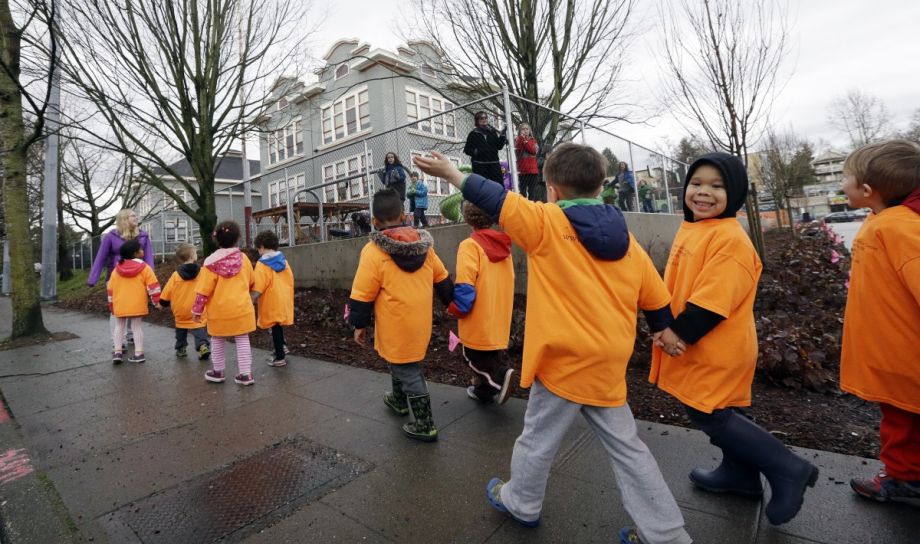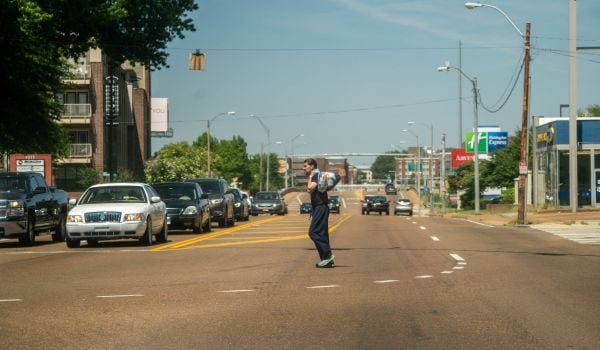In January, the Seattle Department of Transportation broke ground on a new multiuse trail to help students at Mercer International Middle School safely walk and bike to school. It is the first of 12 Safe Routes to School (SRTS) projects SDOT has in the pipeline for 2016.
For the Mercer school project, SDOT is improving an existing gravel maintenance road to create the 12-foot-wide paved and lighted path on the edge of Beacon Hill’s Jefferson Park. The school sits at the southwestern corner of Jefferson Park and is flanked on either side by busy arterial streets. The trail will connect the north and sound ends of the Beacon Hill neighborhood greenway providing a more enticing route for kids to walk and bike on than the dark, muddy gravel path they had before.
“Connecting neighborhood greenways and next to a park, this Move Seattle Levy-funded trail will keep our most vulnerable residents safe as they travel daily to and from school,” SDOT Director Scott Kubly said in press release announcing the groundbreaking.
According to SDOT SRTS Coordinator Brian Dougherty, $1 million of the $930 million levy is being used for SRTS projects. Another million of the program’s $6.7 million annual budget comes from a federal grant dispersed through the state DOT and revenue raised by speed cameras at 15 schools that ticket drivers for topping the 20 mph speed limit.
“We started that [speed camera] program in 2012, and the council decided to focus all the revenue to SRTS so it’s kind of a virtuous cycle,” Dougherty explains. “When someone receives a ticket for going too fast, the money goes into safety improvements in school zones.”
SDOT is in the midst of another south Seattle SRTS project as well. Rainier Beach High School, South Shore K-8, South Lake High School and Dunlop Elementary all sit in a two-block radius at the center of the Rainier Beach neighborhood on either side of Rainier Avenue. The road is notoriously dangerous and has the highest ratio of crashes to traffic volume in the city. SDOT is installing a new traffic light, curb bulb-out and a median island to slow down drivers and help kids cross safely.
Of course, those crossings on Rainier will now be safer for all residents at all hours and the new Beacon Hill trail will connect students and neighbors alike from one end of the greenway to the other.
To Dougherty’s mind, those sorts of dual-purpose, budget-stretching projects exemplify the SRTS work he and his colleagues are trying to do: “We use the bike and pedestrian master plans to help identify projects, then work with SDOT’s neighborhood greenways program manager to see if there are opportunities for SRTS projects to complement neighborhood greenways.”
He points to speed hump installations around schools in particular. SDOT is planning to install speed humps at nearly every school in the city. “That sets up neighborhood greenways program since they always include speed humps in their projects,” Dougherty says. “It’s one element that’s basically already done when the greenway comes through.”
To date, about half of Seattle schools have received some sort of capital infrastructure improvement through SRTS and nearly all schools have received $1000 mini-grants for education and encouragement projects. Dougherty says the budget boost provided by the speed camera revenue has allowed SDOT to go from five SRTS infrastructure project a year to 12 and create a standardized bike and pedestrian safety program for every school.
The Works is made possible with the support of the Surdna Foundation.

Josh Cohen is Crosscut’s city reporter covering Seattle government, politics and the issues that shape life in the city.
Follow Josh .(JavaScript must be enabled to view this email address)

















